How a gloomy night brought a bright light in the fight against COVID-19
To meet urgent, unmet needs, WHO Somalia donated 200 lifesaving, re-fillable oxygen cylinders to the De Martino Hospital

26 April 2021 - In the last year, while traders worldwide watched as commodities’ prices rose and crashed, one precious commodity that soared in demand and value is medical oxygen. As the Federal Ministry of Health and Human Service (FMoH)’s National Incident Manager for the coronavirus disease (COVID-19) response in Somalia, and Director of one of the busiest hospitals in Somalia – the De Martino Hospital – Dr Abdirizak Yusuf Ahmed knows the importance of medical oxygen.
After being through a year of planning, preparing, coordinating and putting up a brave front against COVID-19, his worst nightmare came true during one long, bleak night. Somalia was facing its second wave of COVID-19, and on 2 March 2021, Dr Abdirizak and his team of doctors had to work tirelessly around the clock, struggling to keep infected patients alive. That evening, all 25 beds in the intensive care unit (ICU) were occupied, and 70 Somalis were in need of oxygen. This was at a time when the country was facing a more severe wave of the COVID-19 pandemic compared to the one in 2020, causing a more devastating and heavier toll on lives and people than had been seen in 2020.
“We ran out of medical oxygen,” he says, remembering all the details. “At midnight, there were already many cases, but more and more sick people kept pouring in. Most of them needed supplemental oxygen therapy. We tried every method possible to give them oxygen. At some point, we were even using Ambu bags and masks.”
He recalls how he worked hard to keep a 16-year-old boy who had another chronic problem alive, but it was a real struggle. They lost 8 people that night. But then, almost as though a miracle knocked at their hospital door, the very next day a team of 3 technical experts from WHO arrived at 2 pm with 200 oxygen cylinders and 50 medical oxygen regulators.
Dr Abdirizak felt like someone had lifted a boulder off his shoulders. He was moved to see people, who had very little hope 12 hours before then, survive and leave the hospital to rush back to their loved ones.
Lives lost due to lack of oxygen
According to the Lancet, a press release issued by Wellcome Trust, Unitaid, and WHO, who have set up a COVID-19 Oxygen Emergency Taskforce, stated that more than half a million patients with COVID-19 in low- and middle- income countries need oxygen therapy every day and shortages are causing preventable deaths. This figure excludes the millions of patients, including newborn babies and children with pneumonia, malaria, and other ailments, who also require medical oxygen therapy each year.
In February 2021, the De Martino Hospital recorded a total of 104 deaths and 163 admissions due to COVID-19. The COVID-19 Oxygen Needs Tracker, available at https://www.path.org/programs/market-dynamics/covid-19-oxygen-needs-tracker/ and managed by PATH, a global nonprofit organization improving global health, estimated that during February, when the cases spiked, the daily oxygen need in Somalia also surged to 7000 cubic metres a day (1000 oxygen cylinders).
After noting the dire situation and growing numbers of cases and increased trend of deaths due to COVID-19, exacerbated by the lack of access to medical oxygen, HE Dr Fawziya Abikar Nur, the Minister of Health and Human Services of the Federal Government of Somalia, called for an urgent meeting on 11 February 2021 with Dr Mamunur Malik, the WHO Representative for Somalia and the WHO Incident Management Support Team (IMST). She described the dire need for medical oxygen and appealed for immediate support. Gauging the critical nature of the situation, the WHO technical team identified the shortage of oxygen cylinders as a bottleneck and agreed to procure 200 units of medical oxygen cylinders and 50 medical oxygen regulators with humidifiers to meet the growing demand for medical oxygen in the hospital.
Empowering hospitals with sustainable solutions
“While responding to the COVID-19 crisis, WHO is working to rebuild health systems in Somalia. In other words, while we provided oxygen cylinders, we are also making sure that the health care workers are adequately trained on their use, not only for COVID-19, but for other medical conditions too,” explains Dr Mamunur Rahman Malik, WHO Representative for Somalia. “In fact, from December to March, with funding from the World Bank, WHO Somalia collaborated with international partners and the teams in the Eastern Mediterranean Regional Office and Headquarters to train clinicians in basic emergency care and management of patients in intensive care units- one component of which was how to use oxygen concentrators. The provision of oxygen is one of the interventions we are using to help patients breath normally and survive after being severely infected with COVID-19. This will help health facilities and communities in the long run too, as we are meeting unmet needs of patients suffering from pneumonia and other diseases, who need oxygen to survive.”
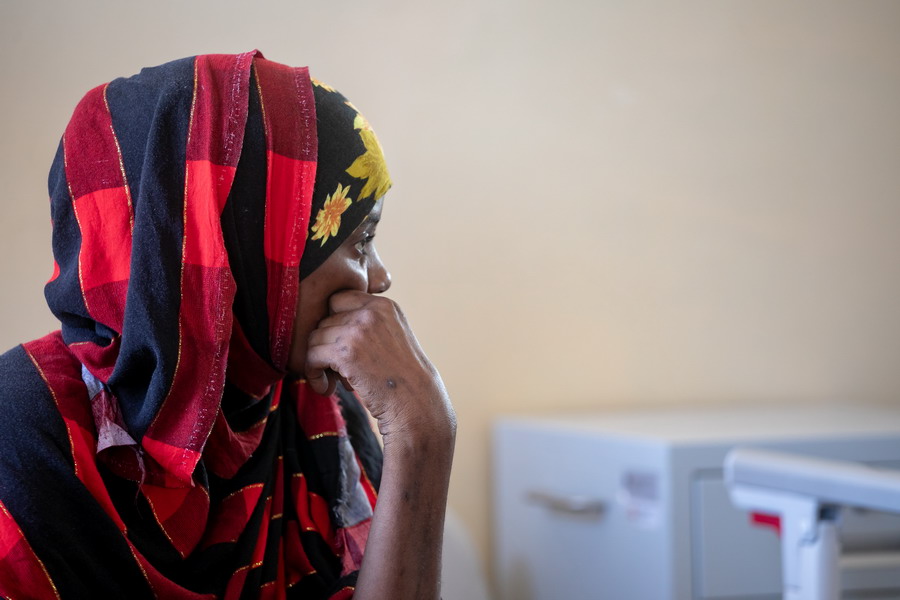
“As soon as we received the request from the Federal Government of Somalia, our procurement team contacted local and regional suppliers. A tremendous coordinated logistics effort followed to drive the empty oxygen cylinders across the country from the supplier’s warehouse to Nairobi’s international airport, and packaging, airlifting them to Mogadishu in batches. We procured and shipped the oxygen cylinders from Kenya, as no one could supply them fast enough in Somalia,” said Dr Shajib Hossain, Medical Operations Lead, WHO IMST in Somalia, who also serves as WHO Somalia’s Planning Officer. “On 3 March, we handed over 200 oxygen cylinders and 50 medical oxygen regulators with humidifiers to the De Martino Hospital. Additionally, to fill in the gap until the FMoH takes charge of the operations, WHO has reached a service-level agreement with a local company in Mogadishu, Ugas Production, to ensure the regular refilling of the oxygen cylinders.”
“We were able to respond swiftly and procure oxygen cylinders and with the arrangement for daily refilling with generous support from our partner, the European Union Delegation to Somalia. We remain grateful to them for their kind and timely support to Somali communities,” added Dr Malik.
Dr Abdirizak, a father of four, who is an infectious disease specialist and public health expert, is giving this fight his all. He knows the pain some families are feeling – he lost his father to COVID-19 in April 2020, when the disease was still new to the world and Somalia.
“Things were tough before the oxygen arrived, as we were using 200 oxygen cylinders a day. Some of the critical patients were using one cylinder every two hours,” adds Dr Abdirizak. “At the De Martino Hospital, we are so grateful to WHO and their partners, not only for oxygen but also for the technical support they have given us to manage the oxygen cylinders. We have reached a stage where we can stand on our feet – we know how to measure oxygen levels and use the cylinders. WHO also helped us setting up a supply, consumption system for the oxygen cylinders in close coordination with a local company to refill the cylinders. As our hospital provides free services, we get so many patients – we are thankful we can actually help the severe cases now.”
WHO was able to procure and provide 200 oxygen cylinders and 50 medical oxygen regulators with humidifiers to the De Martino hospital in Mogadishu with financial support received from the European Union Delegation to Somalia.
Other stories on medical oxygen in Somalia
Reaching the zero malaria target: Somalia scales up efforts to eliminate malaria from 6 pilot districts
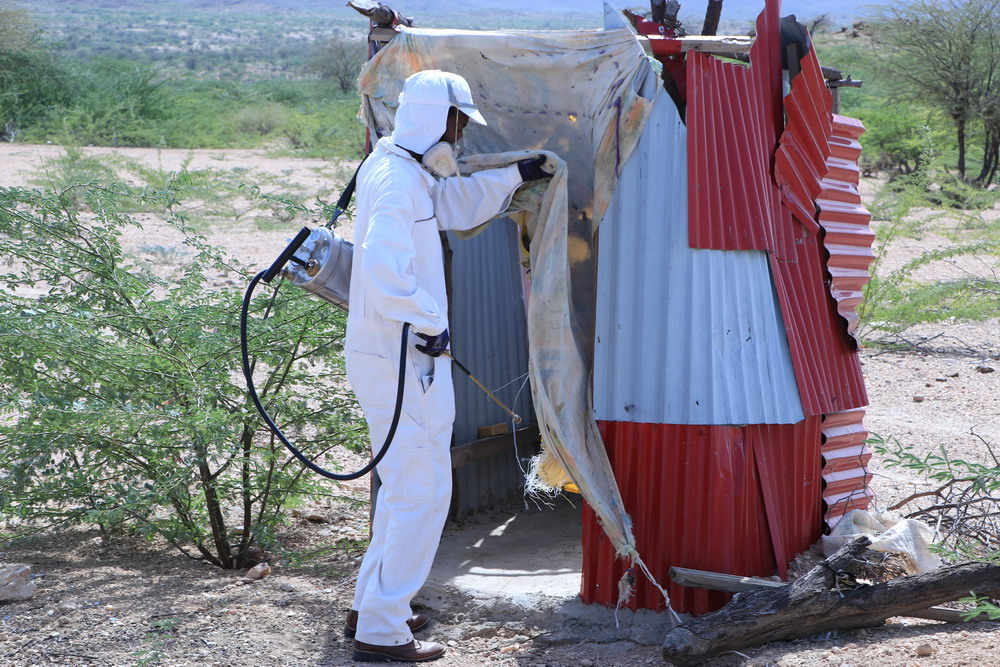
25 April 2021 – Ahead of World Malaria Day, marked annually on 25 April, WHO congratulates the Somali health authorities for taking bold and pragmatic steps to eliminate malaria from 6 pilot districts aiming to halt indigenous transmission of the disease.
While the world was grappling with the rapid and fast spreading pandemic of COVID-19, the World Health Organization (WHO) country office in Somalia has continued to scale up its fight against malaria despite disruption of essential health services in the country.
Somolia has a high-burden of malaria, and between 2000 and 2019, an estimated 759 000 cases and 1942 deaths from malaria have occurred. Various control efforts undertaken by the Government with the support of WHO and the United Nations Children’s Fund (UNICEF) and funded by the Global Fund have resulted in the reduction of incidence from 2.6 cases per 1000 population in 2014 to 1.8 per 1000 population in 2020, showing a 25% reduction.
Recognizing that as long as malaria exists as a disease, it will continue to threaten the poor and vulnerable communities of Somalia, in February of 2020, WHO, UNICEF worked with Somali health authorities to conduct a comprehensive review of the malaria programme. Based on this review, supported by the Global Fund, the Government updated the National Malaria Strategy and Monitoring and Evaluation Plan (2021–2025), which is a part of a multi-pronged approach to reduce prevalence of the disease in the country.
After months of deliberation and analysis, the country decided that conditions were right to target 6 districts for elimination as a pilot project – Odweyne in the region of Togdher; Ainabo in Sool; Burao in Togdher; Sheikh in Sahil; Burtinle in Nugal; and Goldogob in Mudug – all in Somaliland and Puntland. Planning for other regions would have been a challenge, mainly due to insecurity. As a result, from May 2021 onwards, led by the Somali Government and supported by the Global Fund, WHO and UNICEF will roll out national malaria elimination programmes in these 6 districts towards reaching the zero malaria target in some districts.
Sharpening the focus of the malaria elimination programme
“By updating the national malaria strategy, we have sharpened our focus on reducing the burden of malaria that Somali communities endure, one district at a time,” said Dr Mamunur Malik. “Even though we have a long road ahead of us, we are redoubling efforts to ensure we draw a line under this disease. With evidence to drive our strategies, commitment from the Government and donors, and a renewed sense of hope after observing the positive journeys of countries who have managed to eliminate malaria recently, we are confident that we will make it.”
The updated national malaria strategy outlines 4 pillars to achieve the goal of attaining zero deaths due to malaria and reducing malaria incidence from the current incidence of 1.8/1000 in 2020 to at least 0.5/1000 population by 2025.
Two of the pillars would result in creating more inclusive and well-coordinated malaria prevention and case management interventions; strengthening the capacity of institutions; and using effective strategies to boost malaria elimination and maintain no local transmission in at least 15 districts. The third and fourth pillars would enhance the generation and use of strategic information to guide interventions, as well as create an enabling environment for the nationwide malaria response, in areas such as programme management, resource mobilization, stewardship, and securing of commodities among others.
“While we have targeted 6 districts for malaria elimination, we continue to intensify our control efforts in the rest of the country. Our vector control efforts will help reduce the transmission of other vector-borne diseases, such as chikungunya and dengue fever,” said Dr Jamal Amran, Malariologist working for WHO Somalia country office.
Making bittersweet discoveries
Between 2019 and 2020, the Somali national malaria control programme made 2 new discoveries that will pose as speed bumps to the national goal of elimination of malaria by 2025. The first was the discovery of an invasive malaria vector (Anopheles stephensi), found mostly in urban areas, by 2 independent entomologists in Bossaso and Berbera from 2019 to 2020. The samples of this vector were sent to the United States of America (USA) for polymerase chain reaction (PCR) confirmation.
The other discovery, of the Plasmodium falciparum with gene deletion, which makes it harder to detect through the rapid diagnostic tests, was made by Dr Abdikarim Musse, WHO National Malaria Focal Point in Somaliland, in 2020, through the study of blood samples collected from infected patients who were registered at the Borama Hospital; the Sheikh Ali Jowhar Mother and Child Health clinic in Awdal; and the Hargeisa Group Hospital in Marodijeex. The discovery of this species was further validated by the London School of Hygiene and Tropical Medicine.
The detection of this vector and parasite were a milestone, given the severe strain on the programme and health care workers caused by COVID-19. However, while these new findings will help guide the response of the Somali national malaria control programme, they also worsen the malaria burden in the country, and require additional strategies and resources to curb the multiplication of these kinds of vectors and parasites.
So far though, the dominant species of malaria throughout the country has been P. falciparum, the deadliest of the 5 known human malaria-causing agents globally, which has been responsible for over 98% of infections.
Dr Ali Abdirahman, National Malaria Control Focal Point for Somalia, explains how the programme’s efforts are helping to empower young Somalis among others, and provide sustainable solutions to prevent the spread of malaria.
“While we work on malaria control strategies, we are also training young Somalis, teachers and health workers to learn how to participate in community interventions, such as reducing the chances of mosquitoes breeding in stagnant water. With support from the Global Fund, we have been teaching people on site and also hold specific regular training to equip people with skills,” said Dr Ali Abdirahman.
Progress made so far
In 2020, 341 341 suspected cases of malaria were tested, of which 27 333 were positive. All these cases were treated with artemisinin-based combination therapy. Compared with 2019, the number of confirmed malaria cases treated declined by 31% (39 687 confirmed cases of malaria were treated in 2019).
In order to offset the anticipated effect of COVID-19 on malaria control and elimination, WHO scaled up control efforts in high-risk areas. To that end, 1 473 529 long-lasting insecticidal nets were distributed to 2 947 058 people in malaria-prone areas. WHO also supported indoor residual spray activities in the flood-affected areas as a core intervention to reduce and control the risk of a surge in malaria cases. An estimated 269 685 people were protected by these control interventions.
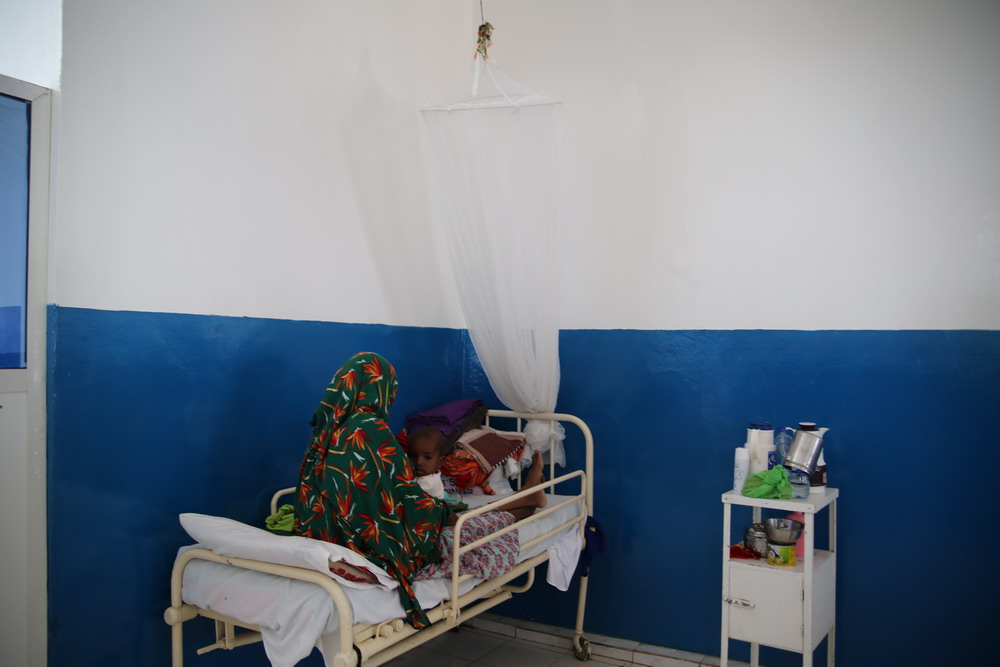
“According to WHO, children under the age of 5 years in sub-Saharan Africa continued to account for approximately two thirds of global deaths from malaria. With continued support from our partners and communities’ renewed efforts, such as reducing ideal breeding grounds for mosquitoes, the use of treated mosquito nets, and continuing research around vector control, we can take huge strides in malaria control,” said Dr Fawziya Abikar Nur, Minister of Health and Human Services, Federal Government of Somalia.
The road ahead
In addition to the rolling out of malaria elimination activities in selected districts as a start, the national malaria programme has plans to reach zero malaria in other areas by strengthening primary health care systems that ensure access to malaria prevention, diagnosis and treatment services, without financial hardship, for everyone living within their borders – regardless of nationality or legal status. The programme also intends to conduct additional research on the recently identified vector and parasite; strengthen the malaria surveillance system; and strengthen vector control core measures, including Larval Source Management, the use of insecticide residual spray and long-lasting insecticidal nets. The programme will also raise awareness around malaria prevention; increase cross-border collaboration, including with Djibouti, Eritrea and Ethiopia, to avoid the importation of vectors and parasites as a result of unmonitored and free travel within the region; and consider ways to collaborate with private sector health institutions to curb the spread of malaria.
Somalia implements ground-breaking project aimed at improving psychosocial support and mental health care for young people affected by conflict through a socially-inclusive integrated approach for peace-building
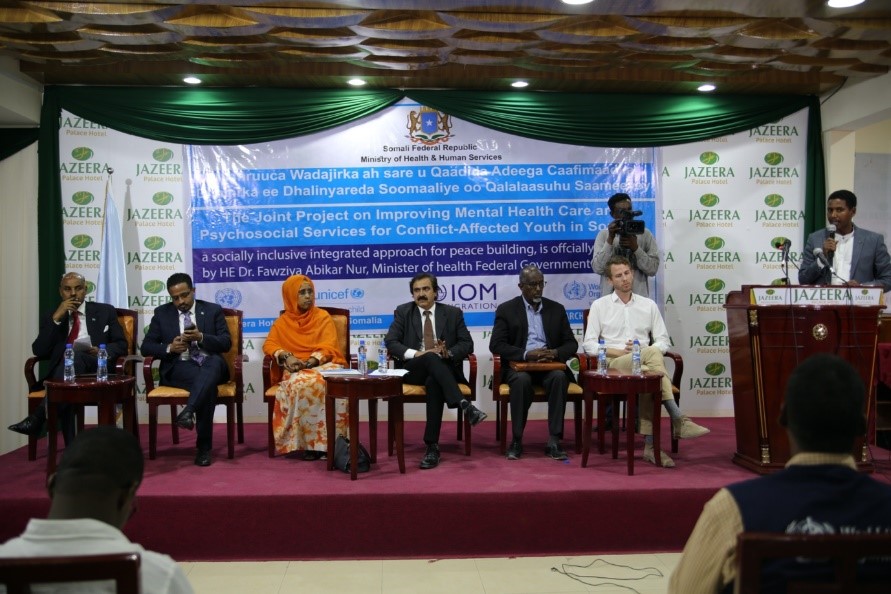
21 April 2021 – Years of conflict, violence and recurrent climatic shocks have led to long-term displacement and economic adversity in Somalia. Currently, about 2.6 million people are internally displaced, 40% of whom live in extreme hardship. This situation has led to widespread trauma, social deprivation and substance abuse, with devastating consequences on people’s mental health. A 2010 WHO situation analysis estimated that one third of Somalia’s population suffers from some form of mental health problem, in a country where two thirds of the population is under 30 years of age and has had to live with violence their entire life. Despite this, mental health and psychosocial support services remain largely non-existent in the country, while stigma prevents many from seeking help.
It is in this context that WHO, as a lead agency in health, partnered with Somali health authorities, UNICEF, International Organization for Migration and the United Nations Peacebuilding Fund to develop a unique project called “Improving psychosocial support and mental health care for young people affected by conflict in Somalia: a socially-inclusive integrated approach for peace-building.” The overall objective of the project is to improve access to mental health and psychosocial support services for young people affected by conflict in Somalia, using an approach that contributes to peacebuilding through community reconciliation and social integration. The project was officially launched during a ceremony in Mogadishu in March 2020, in the presence of the Federal Ministry of Health, H.E. Dr. Fawziya Abikar Nur.
To achieve this goal, all project partners will work together to: train health workers to integrate care and treatment of mental illness into the primary health care services delivery at health facilities; establish community-based psychosocial support structures and services where youth are mobilized in delivering such services themselves and awareness-raising activities; and conduct a study on the linkages between mental health, conflict and peace-building in Somalia, with a particular focus on youth and gender dynamics. Indeed, these activities are aimed at helping to reduce stigma associated with mental health and psychosocial disorders, improve social cohesion, and reduce disenfranchisement and marginalization of young people – a recognized driver of conflict – thereby directly empowering youth to be agents of peace and positive change in their communities.
The project directly targets 26 500 individuals living in camps for internally displaced persons in Kismayo, Baidoa and Dollow, with a focus on young women and men, as well as their families. It is expected that an additional 288 520 individuals will indirectly benefit from this project as well.
As the first venture of its kind in Somalia, whereby institutional response to mental health and psychosocial issues is being undertaken as a means to address a critical barrier to reconciliation and sustained peace in the country, WHO and all project partners look forward to leveraging this unique opportunity in favour of improving and expanding access to mental health services across the country.
WHO expresses its sincere thanks to the Youth Promotion Initiative of the United Nations Secretary General’s Peacebuilding Fund for its generous support to this critical project and encourages other partners to step up their support to address Somalia’s silent mental health crisis.
|
THE PROJECT IN A SNAPSHOT |
|
|
DURATION 21 months (November 2019-August 2021)
|
LOCATION Kismayo, Baidoa, Dollow, Mogadishu, Galkayo |
|
BUDGET US$ 1.5 million |
BENEFICIARIEs
26 500 direct beneficiaries 288 520 indirect beneficiaries |
|
ACTIVITIES
Training of health workers Psychosocial support services in IDP settlements using existing primary health facility as the entry point Develop a youth-led, peer-to-peer mental health/substance abuse awareness programme with marginalized communities Academic study |
|
For further details, please contact:
Mr Kyle DeFreitas
External Relations Officer
Dr Rizwan Humayun
Management Officer
For photos of the launching ceremony, please visit the official WHO Somalia Flickr account
Solar-powered medical oxygen systems saving lives in Somalia: using innovation to accelerate impact in a fragile setting
1 April 2021 – On 5 February 2021, minutes after she gave birth to her eighth child at the Hanaano General Hospital in Dusamareb, 37-year-old Zahra’s* heart sank. Her doctor explained her baby had birth asphyxia, which meant she was having difficulties in breathing. She had an oxygen rate of less than 40%, compared to the required levels of 90% and above.
“I cried and was worried when I saw my child very ill,” said Zahra. “I believed she would die.”
Immediately, the baby was admitted to the maternity ward, where doctors rushed to offer her medical oxygen using one of the 3 solar-powered oxygen machines that had just been installed at the Hanaano General Hospital.
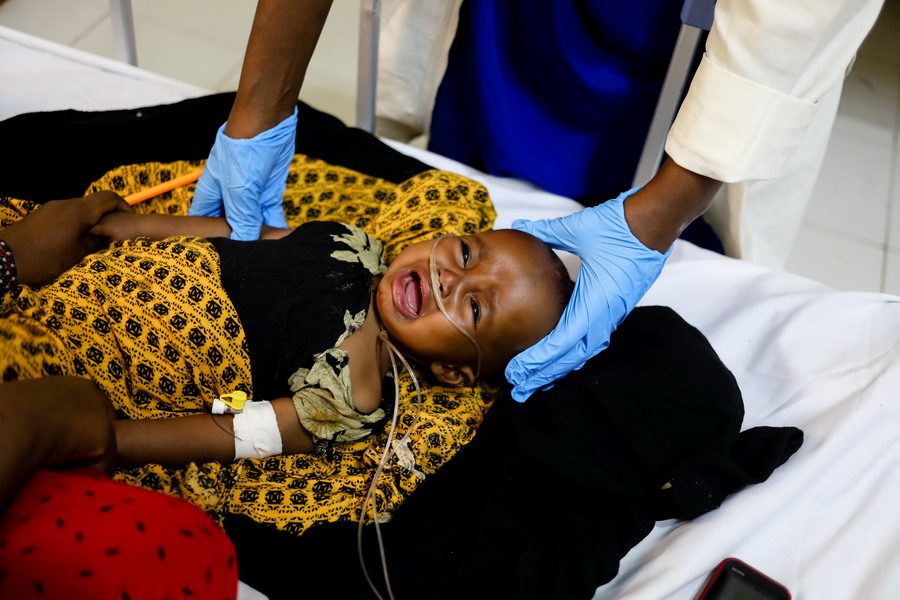 Zahra's child receives oxygen
Zahra's child receives oxygen
“Now I am very happy – I saw the situation of my child improving and saw her receive oxygen for 24 hours a day, as needed. I am really grateful to the hospital team and the World Health Organization,” said Zahra.
Dr Mohamed Abdi, the Hospital Director at Hanaano General Hospital, couldn’t hide his gratitude towards the supporting partners either. Zahra’s baby was special to him because she was the first person to use the solar-powered oxygen since it had been installed. Thanks to one of the new systems, Zahra’s baby’s oxygen saturation levels more than doubled, to 94%.
“I was responsible for laying the first brick in the Hanaano Hospital,” said Dr Mohamed Abdi, the Hospital Director at the Hanaano General Hospital. “Since then, this is the first time I have seen how one timely investment can save lives. Last year, sadly, more than 180 patients died in the hospital, due to the lack of oxygen. Many of them were children. This system will save many lives, and we are really grateful to the Government, WHO, and all the actors who supported this intervention.”
Medical oxygen system runs on freely available resources
“When the first laboratory-confirmed case of COVID-19 was reported on 16 March 2020 in Somalia and the outbreak was raging across the country, none of the public sector hospitals in Somalia had medical oxygen available,” said Dr Mamunur Malik, World Health Organization (WHO) Representative for Somalia. “Driven by the dire need for pure, high-grade medical oxygen, we realized we had to act fast to save lives – and we did it with the support of our partners.”
In a display of strong international collaboration, the solar-powered oxygen concentrators were installed in the Hanaano General Hospital, Dusamareb in Galmudug State, early in February 2021.WHO collaborated with Grand Challenge Canada (GCC), one of the innovation funders on this intervention.
“Saving lives by using freely available resources — the sun and air. How ingenious,” said Grand Challenges Canada’s Co-Chief Executive Officer, Karlee Silver. “We take it for granted but oxygen is an essential medicine used to care for patients at all levels of the healthcare system, including in pneumonia, surgery, heart failure and emergency obstetric care. COVID-19 has made the delivery of oxygen even more urgent. We are excited to take part in this truly global partnership that has tangible impact, that focuses on local ownership, and that speaks to the particular needs of remote, rural health facilities in Somalia.”
Monitoring the system successfully
As Site Champion trained by the Global Health Uganda and the University of Alberta, Canada, Abdiirizak Ahmed Mohamud is in charge of monitoring and running the oxygen system.
Every day, Mohamud keys in information on patients using an electronic system and regularly checks that the panels and systems are functioning. He works closely with a team from the Global Health Uganda and University of Alberta. The team is led by Dr Michael Hawkes, a professor from the University of Alberta with a special interest in paediatrics, who monitors these data on a regular basis.
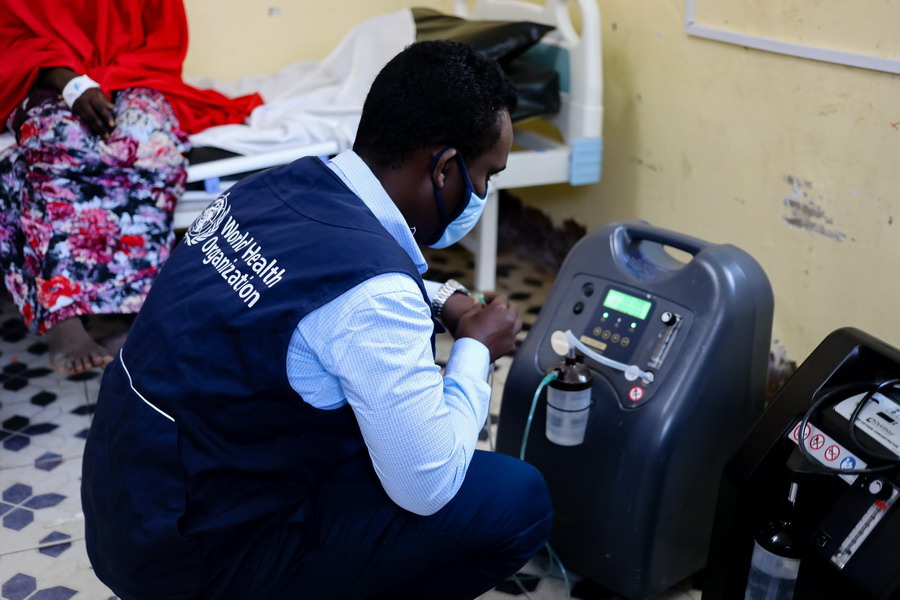
While explaining its use, Mohamud shares that the oxygen system serves people from neighbouring districts too. They learn about it through word of mouth. He adds that, so far, the oxygen system has helped patients suffering from birth asphyxia, pneumonia, COVID-19, major trauma (gunshots, road accidents), shock and comatose, cardiovascular problems such as cardiac failure, and asthma.
Use of oxygen system going above and beyond expectations
Fuelled by an ambition to help medical practitioners in developing countries find sustainable solutions to children’s needs, Dr Michael Hawkes had set up a similar solar-powered oxygen system successfully in Uganda. He set up this system in Somalia as a pilot project to measure its impact in a conflict-affected country, with support from a nurse and project manager, John Kanyonyozi, and an electrician who oversaw the installation, Steven Ngaciki.
Surprised at how in the last few months, the system in Somalia had gone above and beyond his expectations, Dr Hawkes remarked, “When the hospital asked us to install solar-powered oxygen in the operating theatre, I was hesitant. We have been focused on children in the paediatrics ward. But when violent conflict erupted and a surge of patients with gunshot injuries flooded the hospital, solar-powered oxygen came in handy for anaesthesia for the trauma surgeries – an unexpected use for solar-powered oxygen in Somalia!"
Dr Hawkes explains that in low-resource settings like Somalia that witness frequent power outages, this would be likely to affect patients using other sources of medical oxygen, such as oxygen cylinders and concentrators. With a solar-powered system though, there was likely to be a continued promise of uninterrupted sunshine to keep it running.
The support that turned an idea into reality
In addition to the support provided by Grand Challenges Canada and the University of Alberta, WHO’s support to this innovative pilot project comes through collaboration across several departments embedded within 3 levels of the Organization – including the Innovation Team at the WHO headquarters, the WHO Regional Office for the Eastern Mediterranean and the WHO Somalia country office.
“This partnership came about through a new faciliatory role WHO has taken on that links country demands to innovation supply and assessment,” says Dr Soumya Swaminathan, Chief Scientist at WHO. “We are hoping to see similar innovative interventions and multi-partner efforts scaled up across the world to benefit communities in need.”
The Innovation Team from the Digital Health and Innovation department at the WHO Headquarters was responsible for facilitating the project, under the leadership of Ms Louise Agersnap and with key support from Dr Jitendra Sharma. They linked the team in Somalia with the innovator and funding agencies to ensure a smooth installation of the systems.
Various UN agencies and implementing partners have provided support to turn this idea into a reality. WHO is working with the multi-partner-driven "Global Action Plan for Healthy Lives and Well-being for All" (SDG3 GAP) to match the demand and supply of life-saving oxygen in Somalia. The implementation of this innovative solution is also coupled with research supported by the UNICEF/UNDP/World Bank/WHO Special Programme for Research and Training in Tropical Diseases (TDR) to gather evidence of the system’s feasibility, utilization, cost effectiveness and survival in a complex context like Somalia.
Handover of medical oxygen systems
On 29 March, the Deputy Special Representative of the UN Secretary-General and the UN Resident and Humanitarian Coordinator for Somalia (DSRSG/RC/HC), Adam Abdelmoula, and the WHO Representative for Somalia, Dr Mamunur Malik, visited the Hanaano Hospital in Dusamareb, Galmudug State of Somalia, to officially hand over the 3 solar-powered oxygen plants to the Galmudug Ministry of Health.
 The Deputy Special Representative of the UN Secretary-General for Somalia, UN Resident and Humanitarian Coordinator, Adam Abdelmoula (second from left), together with by UN officials and officials from the Galmudug State of Somalia, during the ceremony to hand over solar-powered oxygen stations and ventilator units to Hanano Hospital in Dhusamareb, Galmudug State of Somalia, on 29 March 2021. UN Photo/John Arigi
The Deputy Special Representative of the UN Secretary-General for Somalia, UN Resident and Humanitarian Coordinator, Adam Abdelmoula (second from left), together with by UN officials and officials from the Galmudug State of Somalia, during the ceremony to hand over solar-powered oxygen stations and ventilator units to Hanano Hospital in Dhusamareb, Galmudug State of Somalia, on 29 March 2021. UN Photo/John Arigi
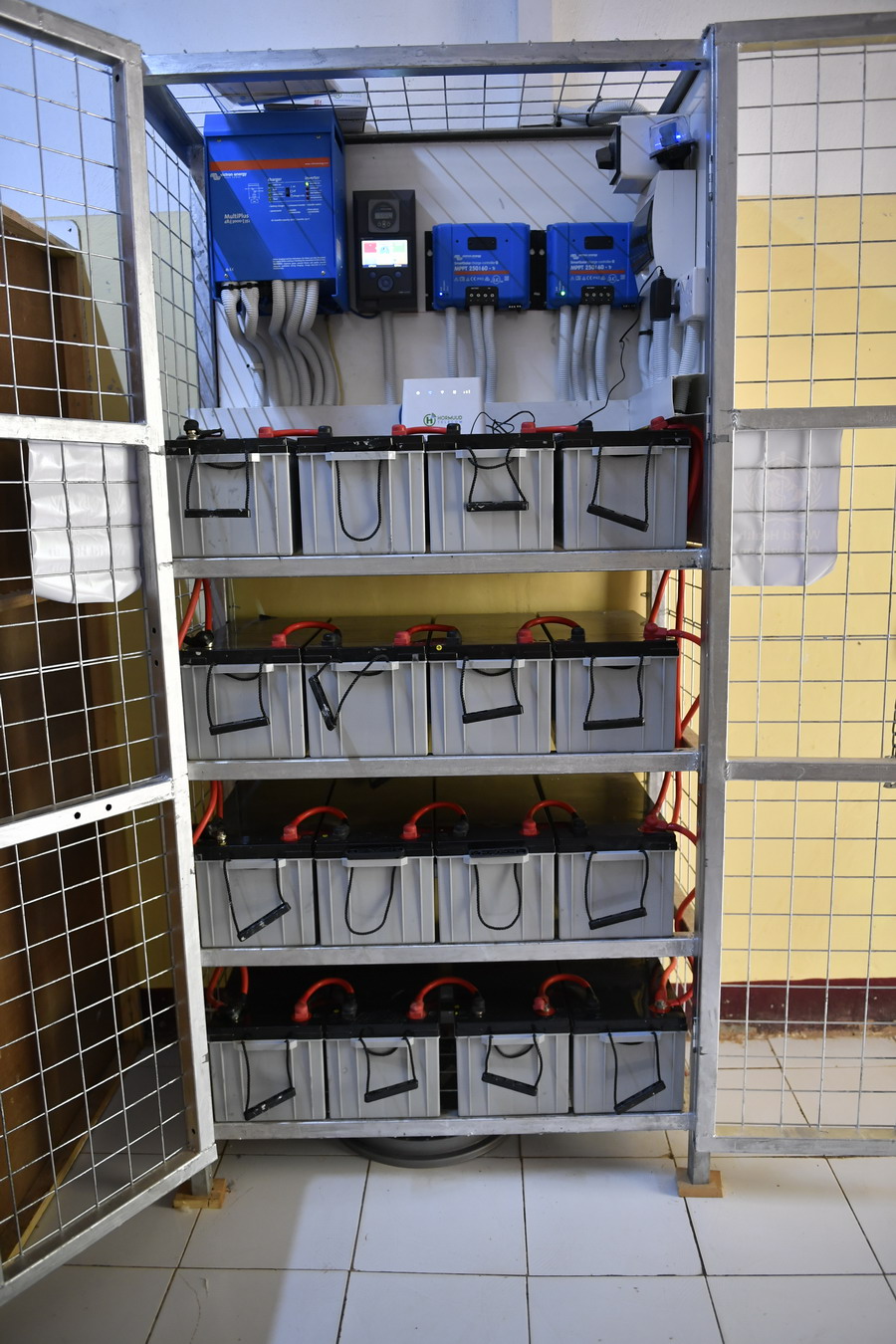 The solar-power house that was set up with UN support at Hanano Hospital in Dhusamareb, the capital of Galmudug State of Somalia. The Deputy Special Representative of the UN Secretary-General for Somalia, UN Resident and Humanitarian Coordinator, Adam Abdelmoula, visited Dhusamareb to officially hand over the facility, on 29 March 2021. UN Photo/John Arigi“The availability of medical oxygen in health facilities is critical to saving people’s lives, in any medical condition. Globally, there is a critical shortage of medical oxygen globally, especially in low-income countries. Somalia’s infant and maternal deaths are among the highest in the world. Reducing this number will require bold and strong political commitments to improve access to high quality health services in the country. The right investment that WHO has made on medical oxygen in one of the most peripheral states of Somalia will help in the future not only for COVID-19 treatment but also all the diseases that warrants for supplemental oxygenation therapy, such as pneumonia,” said Mr Abdelmoula during the handover ceremony.
The solar-power house that was set up with UN support at Hanano Hospital in Dhusamareb, the capital of Galmudug State of Somalia. The Deputy Special Representative of the UN Secretary-General for Somalia, UN Resident and Humanitarian Coordinator, Adam Abdelmoula, visited Dhusamareb to officially hand over the facility, on 29 March 2021. UN Photo/John Arigi“The availability of medical oxygen in health facilities is critical to saving people’s lives, in any medical condition. Globally, there is a critical shortage of medical oxygen globally, especially in low-income countries. Somalia’s infant and maternal deaths are among the highest in the world. Reducing this number will require bold and strong political commitments to improve access to high quality health services in the country. The right investment that WHO has made on medical oxygen in one of the most peripheral states of Somalia will help in the future not only for COVID-19 treatment but also all the diseases that warrants for supplemental oxygenation therapy, such as pneumonia,” said Mr Abdelmoula during the handover ceremony.
Like most of Somalia, Galmudug – home to nearly 1.5 million people – struggles for resources when it comes to health care. According to authorities, only 38% of the population have access to health care in the entire Federal Member State.
Since these 3 solar power-based oxygen stations were installed, between 8 February and 30 March, 45 patients with different medical conditions received medical oxygen from these stations. Among these, 30 were children. Forty-two patients were discharged as cured.
“Oxygen is a smart investment,” adds Dr Mamunur Malik, on behalf of the technical team of experts working on this pilot project. “If we manage to replicate and systemize the approach taken in this pilot, we can save many more lives, as we are continuing to do in Somalia. This will help us inch closer to attaining WHO’s Triple Billion targets, and the health-related Sustainable Development Goals.”
It is estimated that pneumonia killed an estimated 15 165 children under 5 in Somalia in 2018 (about 21% of child deaths) – about 2 children every hour. While the global evidence shows that up to 35% of childhood deaths from pneumonia are preventable with the use of medical oxygen, the WHO country office in Somalia is hopeful that by forging strategic partnerships with innovators, funders, SDG3 GAP agencies and the private sector, demand for medical oxygen and innovation will increase, which will accelerate the impact of this new initiative in reducing deaths from childhood pneumonia as well as other medical conditions.
*Name changed to protect privacy


